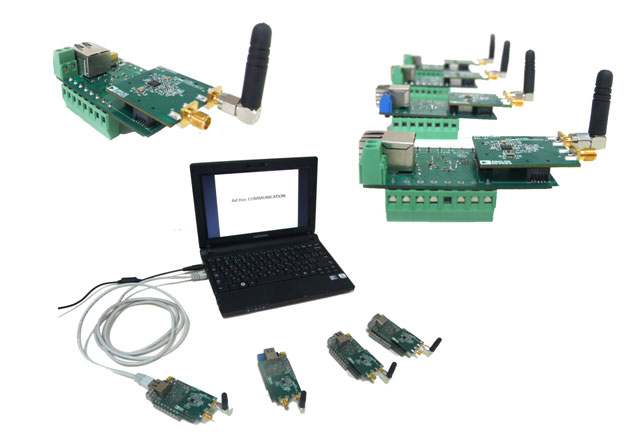Research of ultra wideband impulse radio signals properties and development of self-organizing radio networks based on these signals and terminals for them.
A new theoretical base and new methods of using ultra wide band radio signals in self-organized radio networks were created. The main idea of the self-organized networks is based on a fact that each terminal in the network acts not only as final transmitter and receiver of information but as a repeater – router for all subscribers in the network. Each terminal provides network parameters evaluation and optimizes information traffic control mechanisms. Raising of terminals intellectuality levels together with ultra wide band signals application permits to get new solutions in developments of self-organized radio networks.
A new method of ultra wide band radio signal reception and the circuitry of the receiver is proposed. The method assumes using ultra short impulses with amplitudes higher then rms noise level as a trigger to excite monostable multivibrator generating impulses with higher amplitude and duration. The last ones process by appropriate techniques rather than input impulses energy collection. A model of hierarchy structure of intellectual network control systems and method coordination of objective function of nodes based on fuzzy logic. Node and network resource control methods on different levels of OSI model are proposed. Series methods and mathematical models of multiple access protocols to radio channel with ultra wide band signals on link level are proposed. On network level it was proposed to control network topology as a part of routing. An intellectual method of coordinate routing based on ultra wide band signals properties was proposed. Analytical models of terminals connectivity duration for transport level are presented. Also models to evaluate time-out intervals range for packet transmit repetitions are provided. Architecture and concept of terminal hardware construction for self-organized radio networks with ultra wide band signals are presented.

| Attachment | Size |
|---|---|
| 299.92 KB |




